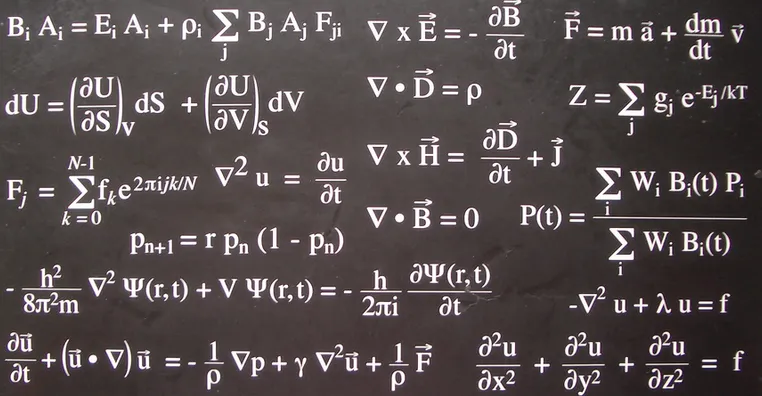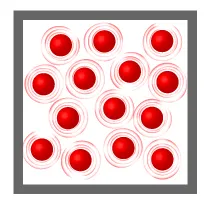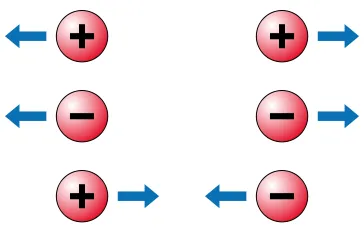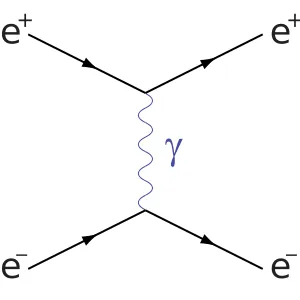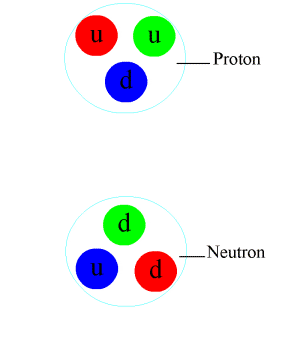The use of mathematics in science and engineering is one of humanity's greatest achievements and it has lifted us out of the stone age and into the current golden age of knowledge and prosperity.
There is no doubt then that math has done an incredible job at representing the world at both the macro level as well as much of the micro level but does it truly represent reality?
In this post I will attempt to describe what is happening in our physical reality at the smallest levels and we will then see if math can still be thought to actually represent reality.
What Does Random Mean?
Can any equation , prediction or model that has a random function buried in it somewhere be said to represent reality?
What is randomness though? Wikipedia defines it as:
Randomness is the lack of pattern or predictability in events. A random sequence of events, symbols or steps has no order and does not follow an intelligible pattern or combination. Individual random events are by definition unpredictable, but in many cases the frequency of different outcomes over a large number of events (or "trials") is predictable.
This to me is a great definition because it is honest. It does not try to define what randomness is but instead defines the negative, what randomness is not.
Randomness is not predictable and technically speaking I do not think that it can actually be defined directly. Even though we have random functions in our computer codes the term random is not actually a definable term.
It is an undefinable beast that literally escapes our ability to understand it.
Let me provide a trivial example using our understanding of temperature and then go deeper with more fundamental physics.
Temperature
All atoms and molecules with temperatures above zero kelvin have non-zero energy and are in constant motion. If you have a large collection of atoms or molecules you can define their energy with one number that we call temperature.
The temperature of a collection of atoms or molecules is the average kinetic energy of the random movements of all the particles in that collection.
You do not know the energy of any given individual particle since they are all moving around randomly but with a good definition of temperature you can still make some amazing macro-level predictions.
However these predictions are using averages of underlying random events and so it is hard to argue that the math is actually representing reality at a fundamental level.
Radioactive Decay
Let's move on to radioactive decay.
Consider a nucleus of a tritium atom. Hydrogen normally has only one proton in its nucleus but tritium is special, it has two neutrons and one proton in its nucleus and it is unstable.
A tritium nucleus will emit a high speed electron called a beta ray and become a helium-3 nucleus (2 protons and one neutron).
We have no way of predicting when any individual tritium nucleus will emit that beta ray but if we assemble a very large amount of them together we can measure that, on average, half of them will decay away in about 12.3 years.
This gives us a handle on how large numbers of tritium nuclei behave and we can use math to predict the radiation levels coming off of a tritium sample but in reality our math simply cannot predict when any single tritium nucleus will decay away.
Radioactive decay is random and our math cannot handle it at the most basic level, the individual nucleus.
As for temperature, if math cannot predict the individual underlying events then it is hard to argue that the math is actually representing reality at a fundamental level.
Electric Charge Repulsion and Attraction
Electromagnetism is a well studied and well understood force of nature. Like charges repel other like charges and the force of repulsion drops off as the inverse square of their separation. Dissimilar charges attract each other and the force of attraction drops off as the inverse square of their separation.
So far so good.
However quantum field theory has introduced a concept called virtual particles which can be described as transient, random fluctuations in a field and it is these fluctuations that are thought to mediate the force for that field.
In the case of electromagnetism the mediating particle is the photon and the force is mediated by virtual photons.
Virtual particles are a bit hard to understand, maybe because of the use of the term 'particle'. It might be more accurate to describe them as vibrations in a field akin to the vibrations on a drum. So no actual particle is created when it is said that a virtual particle helps mediate a force.
In the case of electric repulsion between a pair of electrons, a number of virtual photons may be transmitted between two electrons. The transient virtual photons will be generated randomly and over time the two electrons will experience a time-averaged force that is described by the force repulsion law.
The law of repulsion then implicitly uses a time-average of random repulsive events (i.e. virtual photon exchanges). Some of these events may be stronger, some may be weaker, or the time intervals between repulsive events may even vary randomly.
In any event the equation of the law of electric attraction or repulsion has implicitly buried within it the time-average of many random events. This randomness is not very often explicitly recognized in the explanations of the equations.
So, as for temperature and radioactive day, in the case of electric charge repulsion and attraction if the math does not seem to be able to describe the lowest fundamental reality. There may be very brief time intervals when two electrons are not repelling each other and intervals when they are. Our math then might be unable to predict then when two electrons will repel each other at the smallest time intervals.
If it can't be predicted at the fundamental level then it is hard to argue that math is representing reality.
Strong and Weak Forces
The strong and weak forces are more complicated than the electromagnetic force. Crudely put, the strong interaction is mediated by gluons and the weak interaction is mediated by force carrier particles termed the W and Z bosons. The nuclear force observed between protons and neutrons in a nucleus are mediated by the residual strong force which are virtual π and ρ mesons.
Okay, I am quite sure that I made a hack of the description of these forces but in any case, the force mediation can once again be described as being mediated by virtual particles which are, once again, random fluctuations in each a particular field.
Using the same argument as for electric force, the strong and weak forces can only be mathematically described over time-averaged intervals. At sufficiently short intervals there may be very short intervals when there are no attractive forces between nucleons. Our math might then be unable to predict then when two nucleons attract each other at these smallest time intervals.

Closing Words
Mathematics is often said to represent reality but this might only be true at the higher, time-averaged macro-levels of physical reality (which can be argued is not reality). At the smallest distances and over the smallest time intervals though events seem to take on a random nature that mathematics cannot describe and science usually gives up and just calculates the time-averages of many random events.
These time-averages are often implicitly buried in the many equations of science and engineering so it is not always obvious that math is not actually representing reality. The deeper reality down at the lowest levels still remains unpredicted by our math.
This leaves at least one question which is, why do the time-averages keep taking on the same values over and over again if they are made up of many random events? Well, that would be the subject of another post.
Thank you for reading my very speculative post.
Post Sources
https://en.wikipedia.org/wiki/Randomness
https://en.wikipedia.org/wiki/Temperature
https://en.wikipedia.org/wiki/Radioactive_decay
https://en.wikipedia.org/wiki/Tritium
https://en.wikipedia.org/wiki/Virtual_particle
https://en.wikipedia.org/wiki/Electromagnetism
https://en.wikipedia.org/wiki/Strong_interaction
https://en.wikipedia.org/wiki/Weak_interaction
